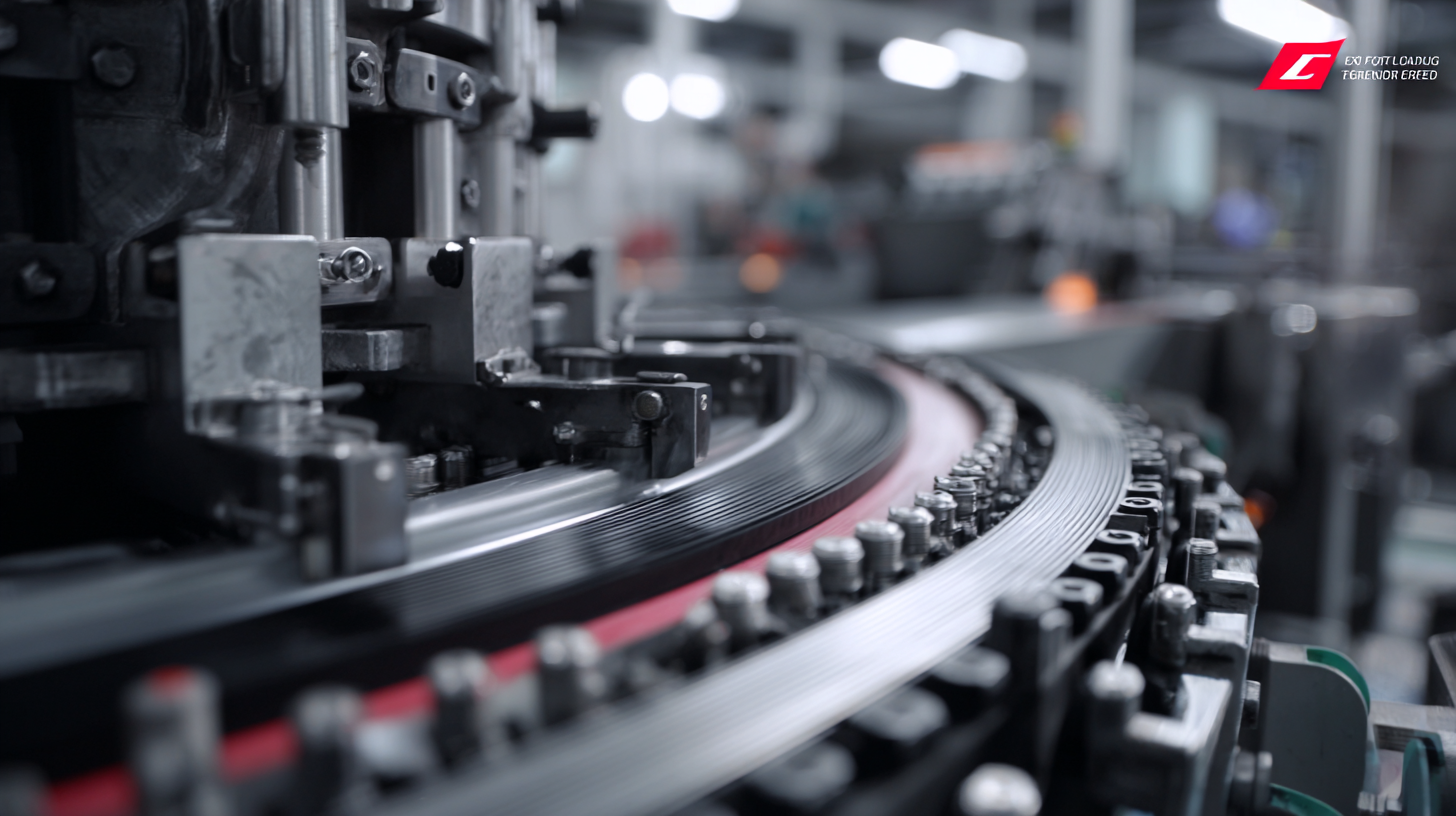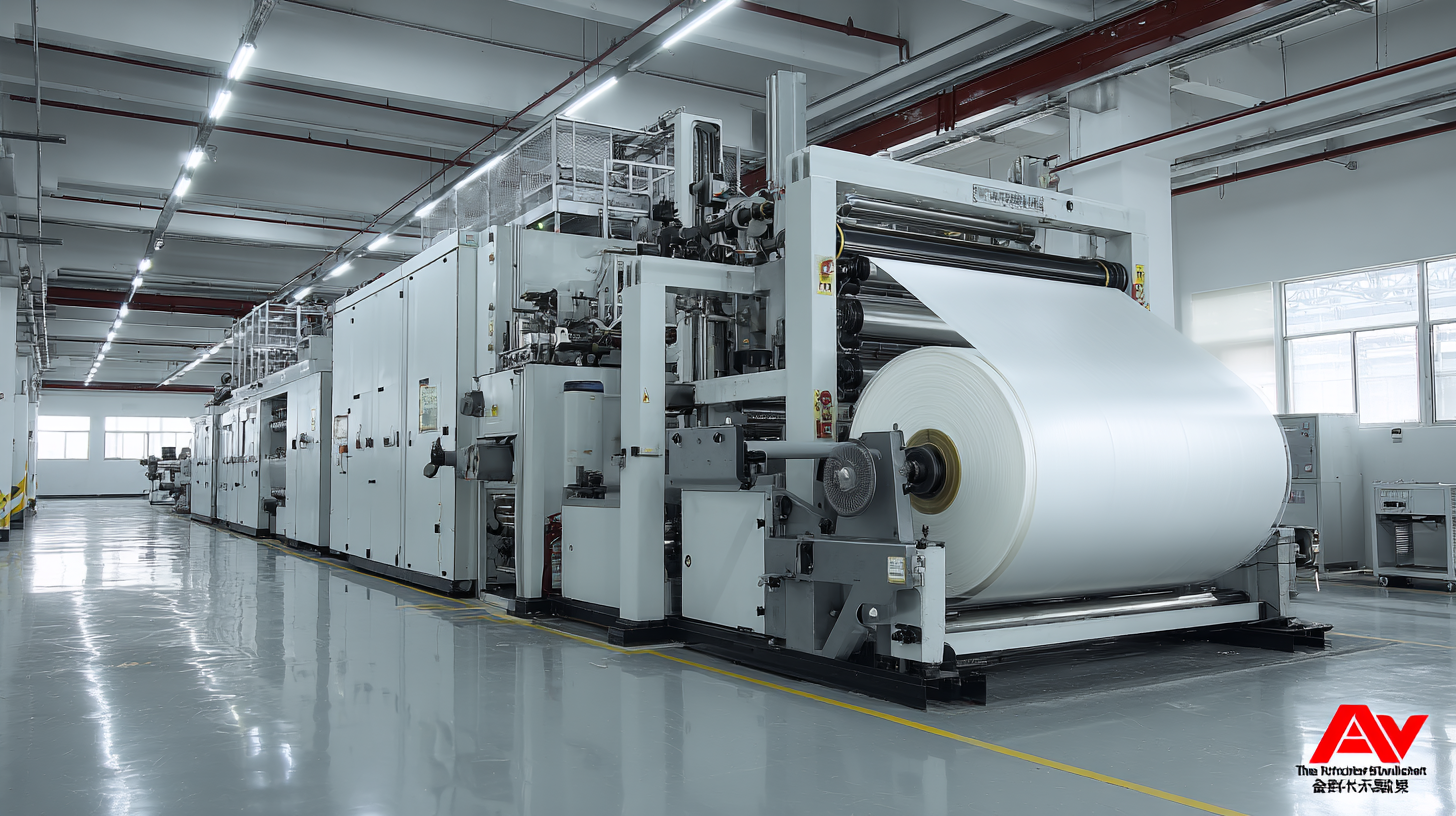As the demand for enhanced durability and efficiency in manufacturing processes continues to rise, the future of advanced rubber belt layering technology becomes increasingly crucial. According to a recent report by Grand View Research, the global rubber market is expected to reach $52.6 billion by 2025, with a significant portion attributed to innovations in machinery and production techniques. A key player in this transformation is the Rubber Belt Layering Machine, which allows manufacturers to achieve precise layering techniques that enhance the structural integrity and lifespan of rubber products. This technology not only improves manufacturing output but also supports sustainability goals by minimizing waste and maximizing material use. As industries strive for competitive advantages, understanding and adopting advanced rubber belt layering technology will be essential for staying ahead in the evolving market landscape.

Advanced rubber belt layering technology has undergone significant evolution over the past few decades, driven by innovation and increasing industrial demands. Initially, rubber belts were primarily used in transmission applications, but as manufacturers sought greater durability and performance, the adoption of advanced layering techniques became essential. According to a recent report from the International Rubber Study Group, the global market for rubber belting systems is projected to reach $5.1 billion by 2025, highlighting the growing importance of advanced technologies within this sector.
The evolution of layering technology has introduced various materials and structural designs aimed at enhancing strength and flexibility. For instance, the integration of synthetic fibers has led to improved tensile strength, while advancements in adhesive technologies have minimized delamination issues. A study published in the Journal of Materials in Engineering and Performance revealed that belts utilizing advanced layering techniques exhibit up to 30% longer service life compared to conventional options. As industries continue to adopt more sophisticated machinery, the demand for rubber belts that can withstand harsh operational conditions is expected to propel further innovations in this field.
As industries evolve, the demand for advanced rubber belt products continues to soar. In manufacturing, for instance, the rubber conveyor belt market is projected to reach $5.85 billion by 2027, driven by the need for efficient material handling systems. High-abrasion-resistant belts are becoming essential in sectors such as mining and construction, where the wear and tear from harsh materials can significantly impact productivity and safety. Companies are increasingly adopting products that enhance performance and reduce downtime, leading to the implementation of innovative layering technologies that improve durability and load-bearing capacity.

In the automotive sector, rubber belts play a critical role, particularly in power transmission systems. With the automotive rubber belt market expected to expand at a compound annual growth rate (CAGR) of 4.5% from 2023 to 2030, manufacturers are focusing on developing belts that offer improved flexibility, heat resistance, and longevity. Specialty products such as timing belts and serpentine belts are engineered to withstand extreme conditions, ensuring optimal engine performance. The shift toward electric vehicles also dictates the need for advanced rubber belt technologies that can adapt to new applications, showcasing the versatility and vital importance of rubber belt innovations across various industries.
The advancement of rubber belt layering technology has become a focal point for industries seeking enhanced performance and durability. In this comparative analysis, we delve into various layering techniques, highlighting their unique benefits and applications. Traditional methods often rely on simple stacking layers of rubber, which may suffice for basic utility but fail to optimize performance under heavy loads or extreme conditions.
Innovative techniques, such as the use of composite materials and advanced adhesive methods, offer significant improvements in flexibility and strength. These modern approaches not only enhance the adhesive properties but also allow for better energy absorption and lower wear rates. By employing varying thicknesses and specialized textures in the layering process, manufacturers can tailor their products to specific operational environments, leading to improved longevity and efficiency. This comparative analysis showcases how these advanced technologies pave the way for the future of rubber belt applications, pushing the boundaries of what these essential components can achieve in various industries.
The versatility of advanced rubber belt layering technology has opened up numerous applications across various industries, demonstrating significant adaptability in diverse environments. According to a recent market analysis by Smithers Pira, the global rubber conveyor belt market is projected to reach approximately $5.4 billion by 2026, driven by increasing demand in mining, construction, and manufacturing sectors. This growth underscores the essential role that rubber belts play in facilitating efficient material handling, particularly in challenging conditions.

In industrial settings, these advanced rubber layers offer excellent resistance to abrasion and chemical exposure, making them ideal for use in harsh environments. For instance, in mining operations, where equipment is subjected to heavy loads and extreme wear, rubber belts engineered with enhanced layering technologies exhibit up to 30% greater durability compared to traditional options, as reported by TechSci Research. Additionally, their flexibility enables effective use in environments with varying temperatures and moisture levels, supporting a wide range of applications, from coal handling to food processing. The continuous innovation in rubber layering not only improves performance but also ensures safety and reliability in operations, aligning with the evolving demands of modern industry.
The advancements in rubber belt layering technology are poised to redefine the manufacturing landscape across various industries. With the upcoming 2024 China International Rubber and Plastics Exhibition, we expect to see a surge in innovative techniques and materials that improve the efficiency and sustainability of rubber products. Key trends include the integration of nanotechnology and smart materials, enabling belts to offer enhanced durability and performance under extreme conditions.
Moreover, as industries increasingly emphasize sustainability, the focus on eco-friendly manufacturing processes is more critical than ever. Companies are exploring materials that not only meet performance standards but also reduce environmental impact. The development of high-performance rubber belts, capable of withstanding high stress while being environmentally sustainable, indicates a promising direction for future innovations. As these technologies emerge, they will likely transform how products are designed and utilized, making them vital for both economic growth and environmental stewardship.
| Innovation | Description | Expected Impact | Implementation Timeline |
|---|---|---|---|
| Smart Rubber Layers | Incorporation of sensors in rubber layers to monitor wear and performance. | Increased lifespan and efficiency of rubber belts. | 2-3 years |
| Eco-friendly Materials | Development of rubber compounds from renewable resources. | Reduction in carbon footprint and environmental impact. | 1-2 years |
| Advanced Manufacturing Techniques | Use of 3D printing and computer-aided design in rubber belting. | Enhanced customization and production speed. | 3-5 years |
| Nanotechnology Integration | Application of nanomaterials to improve strength and durability. | Increased resilience and resistance to abrasion. | 2-4 years |
| Automatic Monitoring Systems | Real-time monitoring systems integrated into machinery. | Preventive maintenance and reduced downtimes. | 1-3 years |
